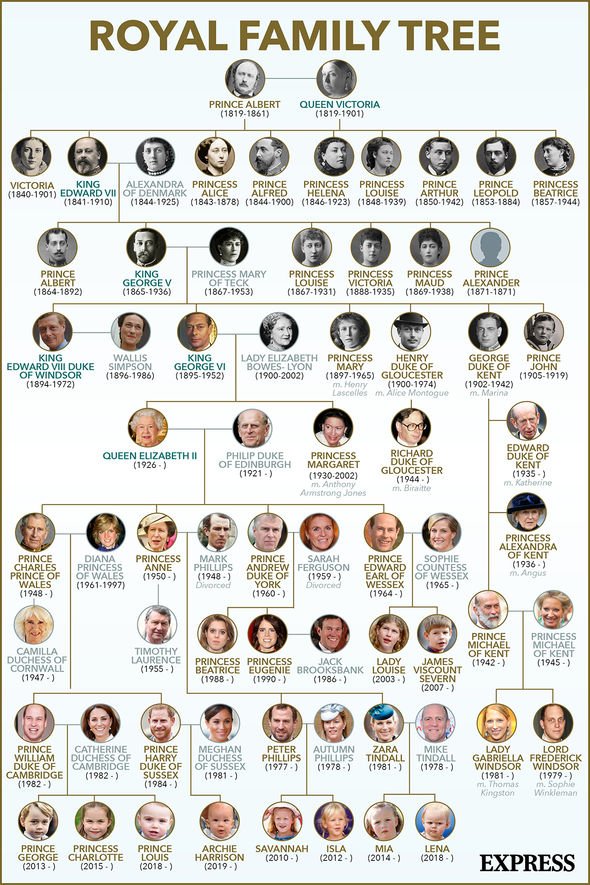Harold’s death at the Battle of Hastings is one of the most significant moments of English history. William’s victory in Sussex sparked the beginning of a new age, as the Normans set about creating a new dynasty. The Bayeux Tapestry, thought to have been commissioned shortly after the battle, has gone down in history as the most famous witness to Harold’s death.
But the depiction may not show the king being shot by an arrow at all.
Accounts from the years immediately after William’s invasion make no mention of an arrow when describing Harold’s death.
The Carmen de Hastingae Proelio, an early Norman history of the battle, reported that William and three knights broke through the English defences, where they butchered Harold.
It read: “The first of the four, piercing the king’s shield and chest with his lance, drenched the ground with a gushing stream of blood.

Royal history rewritten: Harold was ‘NOT shot in eye’ when William the Conqueror invaded (Image: GETTY)

The Bayeux Tapestry (Image: GETTY)
“The second with his sword cut off his head below the protection of his helm. The third liquefied his entrails with his spear. And the fourth cut off his thigh and carried it some distance away.”
This, as Professor Martin Foys points out, is supported by numerous other accounts from the period ‒ but very few mention an arrow to the eye.
French bishop Baudri of Bourgueil wrote a long poem dedicated to Adela of Blois, one of William the Conqueror’s daughters, 40 years after the Normans first landed.
The bishop claims Harold was killed by a “lethal arrow”.
READ MORE: Royal row unveiled as alternative cause of death for Edward V exposed

Harold was defeated at the Battle of Hastings (Image: GETTY)
A few decades later, English historian William of Malmesbury used the phrase again ‒ but crucially elaborated that the arrow pierced Harold’s brain and then he was hacked at by a knight as he lay on the ground.
Two other 12th-century accounts helped to fix the story in the popular imagination for centuries to come.
English historian Henry of Huntingdon reported that a shower of Norman arrows fell around Harold and one “struck him in the eye”.
And the Norman chronicler Wace related that during the battle an arrow grievously wounds the king “above the right eye”.
DON’T MISS
Queen could solve 550-year-old royal mystery as new tactic unveiled [EXCLUSIVE]
Theory ‘Henry VIII was going stop Anne Boleyn’s execution’ uncovered [INSIGHT]
Unearthed letters shine new light on George III’s infamous ‘madness’ [ANALYSIS]

Hastings today (Image: GETTY)

Royal Family tree (Image: GETTY)
However, as Prof Foys notes in his piece for History Today, the Bayeux Tapestry remains the most convincing piece of evidence.
The final battle scene shows a knight with an arrow in his eye. The inscription reads: “Here King Harold is killed.”
Prof Foys – editor of ‘The Bayeux Tapestry: New Interpretations’ – does not believe the story is quite that simple.
He writes: “The Anglo-Saxon shield wall on the left is breached by a charging Norman horseman, cutting down a falling Englishman holding an axe – indisputably identified as Harold – at the centre of the action.
“However, immediately behind the breached wall, the standing figure with his fist raised has also been identified as Harold.
To find out details of coronavirus in your area, please fill in your postcode below.
“The case appears easy to make: the word ‘Harold’ breaks around the standing figure’s head and he appears to be pulling an arrow out of his head.
“This neatly aligns with the later narratives, where Harold is first struck by an arrow and then killed by Norman cavalry.
“But a closer look at the form and history of this scene muddies the water.”
He then suggests that, when the Bayeux Tapestry was altered in the 19th-century, the depiction of Harold’s death was changed to fit the literary narrative.

Royal line of succession (Image: GETTY)
If true, it throws the debate around Harold’s real cause of death wide open.
Prof Foys concluded: “In other Tapestry scenes with long inscriptions, names are often not close to the figures they represent.
“In the earlier scene of Harold’s oath to William, for instance, Harold’s name appears over William’s head.
“And in Harold’s death scene, the arrow of the figure in question is not original, but was added during 19th-century French repairs.
“It is possible that conservators altered the textile’s content to fit later medieval literary traditions.”







